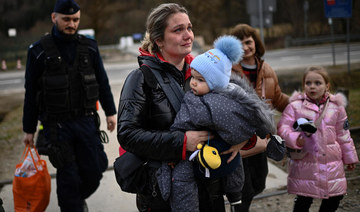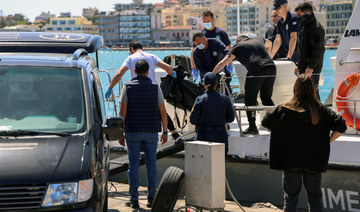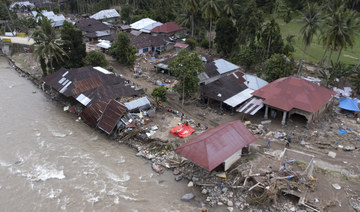ZAPORIZHZHIA, Ukraine: The United Nations raced Friday to rescue more civilians from the tunnels under a besieged steel plant in Mariupol and the city at large, even as fighters holed up at the sprawling complex made their last stand to prevent Moscow’s complete takeover of the strategic port.
The fight for the last Ukrainian stronghold in a city reduced to ruins by the Russian onslaught appeared increasingly desperate amid growing speculation that President Vladimir Putin wants to finish the battle for Mariupol so he can present a triumph to the Russian people in time for Monday’s Victory Day, the biggest patriotic holiday on the Russian calendar.
Some 2,000 Ukrainian fighters, by Russia’s most recent estimate, are holed up in the vast maze of tunnels and bunkers beneath the Azovstal steelworks, and they have repeatedly refused to surrender. Ukraine has said a few hundred civilians were also trapped there, and fears for their safety has grown as the battle has grown fiercer in recent days.
Officials said Thursday that the UN was launching a third effort to evacuate citizens from the plant and the city. But on Friday, the organization did not divulge any new details of the operation; it has been similarly quiet about previous ones while they were ongoing.
Kateryna Prokopenko, whose husband Denys Prokopenko commands the Azov Regiment troops inside the plant, issued a desperate plea to save the regiment, saying they’d be willing to go to a third country to wait out the war but would never surrender to Russia because that would mean “filtration camps, prison, torture, and death.”
If nothing is done to save them, her husband and his men will “stand to the end without surrender,” she told The Associated Press by phone Friday as she and relatives of some of the other members of the regiment drove from Italy to Poland.
“We just need to save everyone’s life,” she said.
It could takes days to know whether the latest UN effort succeeded, since people escaping Mariupol typically have to pass through contested areas and many checkpoints before reaching relative safety in the Ukrainian-controlled city of Zaporizhzhia, about 140 miles (230 kilometers) to the northwest, where many have gathered.
Andriy Yermak, head of Ukraine’s presidential office, said Friday on the Telegram messaging app that another “complex operation to evacuate people from Mariupol and Azovstal” was conducted and that nearly 500 civilians were rescued. Two previous evacuations negotiated by the UN and the Red Cross brought roughly 500 people from the steel plant and elsewhere in Mariupol. It was not clear if Yermak was saying more people had since been rescued.
Some of the plant’s evacuees spoke to the AP about the horrors of being surrounded by death in the moldy, underground bunker with little food and water and diminishing hope. Some said they felt guilty for leaving others behind.
“People literally rot like our jackets did,” said 31-year-old Serhii Kuzmenko, who fled along with his wife, 8-year-old daughter and four others from their bunker, where 30 others were left behind. “They need our help badly. We need to get them out.”
Fighters defending the plant said Friday on Telegram that Russian troops fired on an evacuation vehicle on the plant’s grounds. They said the car was moving toward civilians when it was hit by shelling, and that one soldier was killed and six were wounded.
Moscow didn’t immediately acknowledge renewed fighting there Friday.
Ahead of Victory Day — which marks the Soviet Union’s triumph over Nazi Germany — municipal workers and volunteers cleaned up what remains of Mariupol, a city that is now under Russia’s control apart from the steel plant. Bulldozers scooped up debris and and people swept streets — with a backdrop of buildings hollowed out by shelling. Workers repaired a model of a warship, and Russian flags were hoisted on utility poles.
The fall of Mariupol would deprive Ukraine of a vital port, allow Russia to establish a land corridor to the Crimean Peninsula, which it seized from Ukraine in 2014, and free up troops to fight elsewhere in the Donbas, the eastern industrial region that the Kremlin says is now its chief objective. Its capture also holds symbolic value since the city has been the scene of some of the worst suffering of the war and a surprisingly fierce resistance.
While they pounded away at the plant, Russian forces struggled to make significant gains elsewhere, 10 weeks into a devastating war that has killed thousands of people, forced millions to flee the country and flattened large swaths of cities.
The Ukrainian military’s general staff said Friday that its forces repelled 11 attacks in the Donbas and destroyed tanks and armored vehicles, further frustrating Putin’s ambitions after his abortive attempt to seize Kyiv. Russia gave no immediate acknowledgement of those losses.
Ukraine’s chief of defense Gen. Valerii Zaluzhnyi, meanwhile, said Thursday that a counteroffensive could begin to push Russian forces away from Kharkiv and Izyum — two cities key to the Russian campaign in the Donbas, where Moscow-backed separatists have been fighting Ukrainian troops for eight years. Already, Ukrainian fighters have driven Russian troops some 40 kilometers (25 miles) east of Kharkiv in recent days.
The goal could be to push Russian forces out of artillery range of the city, which has been pummeled by strikes, as well as forcing Moscow to divert troops from other areas of the front line, according to an assessment from the Washington-based Institute for the Study of War on Thursday.
Pentagon spokesman John Kirby said Russian forces are making only “plodding” progress in the Donbas.
The British Defense Ministry said Russia may be struggling to execute its plan in the Donbas partly because it’s bogged down at the plant in Mariupol. The fighting at the plant “has come at personnel, equipment and munitions cost to Russia,” it said. “Whilst Ukrainian resistance continues in Avozstal, Russian losses will continue to build and frustrate their operational plans in southern Donbas.”
The Russians have pulverized much of Mariupol, which had a prewar population of over 400,000, and a two-month siege that has trapped perhaps 100,000 civilians with little food, water, electricity or heat. Civilians sheltering inside the plant have perhaps suffered even more — hunkering underground without seeing daylight in months.
Asked whether Russia would soon take full control of Mariupol, Ukrainian President Volodymyr Zelensky said: “Mariupol will never fall. I’m not talking about heroism or anything.”
“It is already devastated,” he told a meeting at London’s Chatham House think tank. He also said he remains open to negotiations with Russia, but repeated that Moscow must withdraw its forces.
The Russians managed to get inside the plant Wednesday with the help of an electrician who knew the plant’s layout and showed them the underground tunnels, said Anton Gerashchenko, an adviser to Ukraine’s Internal Affairs Ministry.
The Kremlin has denied its troops were storming the plant, and Russia has also accused the fighters of preventing the civilians from leaving.
UN races to rescue civilians from Mariupol plant
https://arab.news/mjkgd
UN races to rescue civilians from Mariupol plant
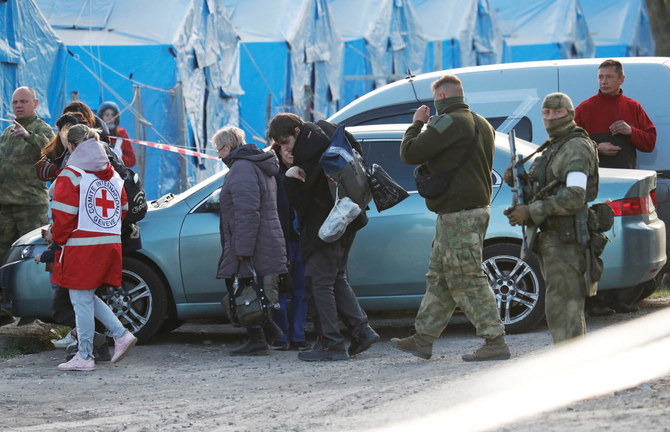
- It could takes days to know whether the latest UN effort succeeded
- Fighters defending the plant said Friday on Telegram that Russian troops fired on an evacuation vehicle on the plant’s grounds
French court gives man suspended sentence for Iran consulate intrusion
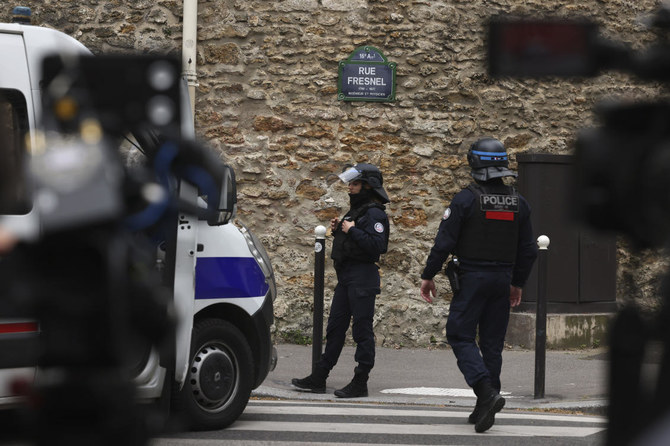
The 61-year-old, a long-time resident of France who regularly attends Iranian opposition demonstrations, told the court he acted on Friday after learning the previous day that his sister had been arrested.
He said he had not wanted to “threaten anyone” but rather “take revenge” on the Iranian authorities, who he described as “terrorist.”
The court, in a ruling late on Monday, also banned him from carrying a weapon or approaching the consulate again.
Soldiers and police descended en masse on the neighborhood around the consulate on Friday after the mission reported an intruder entering with a grenade or explosive belt.
But police found no explosives on him or inside after arresting him.
A police source, who did not wish to be named, said the suspect had been wearing a vest with large pockets containing three fake grenades.
The judge said witnesses recounted the man “tearing down flags” and saying he “wanted to die.” Police negotiators managed to convince him to exit the building without his jacket.
A psychiatric expert found the man was of sound mind.
During his trial, the accused embarked on long tirades about the political situation in Iran, prompting the judge to remind him to “stick to the facts.”
The man had already been convicted for setting fire to tires in front of the entrance of the Iranian embassy in Paris in 2023, prosecutors said.
Citizens in the Islamic republic have endured increased repression since nationwide protests began in September 2022.
The demonstrations were sparked by the death in custody of 22-year-old Mahsa Amini, who was arrested for allegedly flouting the mandatory dress rules for women.
Executions — which activists say are a way to instil fear into Iranian society — have also continued apace.
At least 110 people have been executed this year alone, according to the Norway-based Iran Human Rights group.
At least five migrants died during attempt to cross English Channel - La Voix du Nord
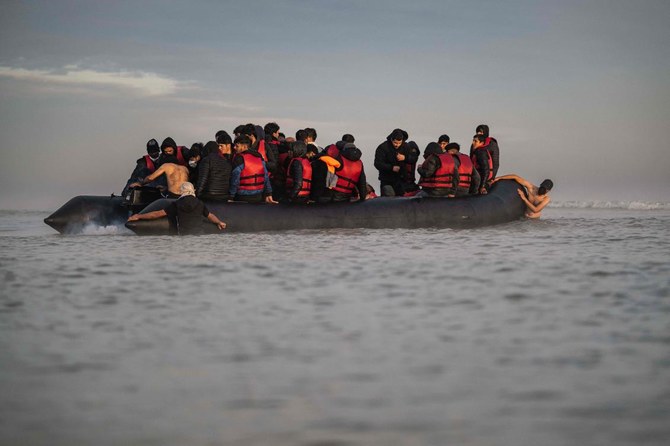
- People smugglers typically overload rickety dinghies, leaving them barely afloat and at risk of being lashed by the waves
PARIS: At least five migrants died in an attempt to cross the English Channel from an area near the town of Wimereux, local newspaper La Voix du Nord said on Tuesday.
The French coast guard confirmed there was a failed attempt to cross the Channel and said police were operating at a beach following the incident on Tuesday morning, adding there were several ‘lifeless bodies’.
Local police did not immediately reply to a Reuters request for comment.
The coast guard spokesperson said its agents were still operating at sea on Tuesday morning after what the official called a ‘busy’ morning, with several crossing attempts.
The Channel between France and Britain is one of the world’s busiest shipping lanes and currents are strong, making the crossing on small boats dangerous.
People smugglers typically overload rickety dinghies, leaving them barely afloat and at risk of being lashed by the waves as they try to reach British shores.
Asia hit hardest by climate, weather disasters in 2023— UN
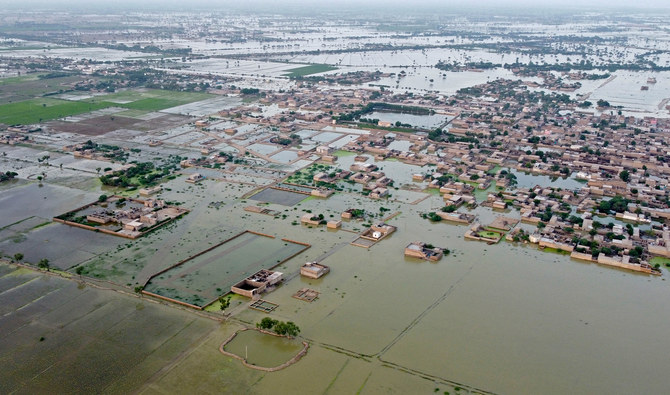
- Climate change exacerbated severity of weather disasters last year, sauys World Meteorological Organization
- 79 disasters, mostly floods and storms, associated with water-related weather hazards were reported in Asia in 2023
Geneva: Asia was the world’s most disaster-hit region from climate and weather hazards in 2023, the United Nations said Tuesday, with floods and storms the chief cause of casualties and economic losses.
Global temperatures hit record highs last year, and the UN’s weather and climate agency said Asia was warming at a particularly rapid pace.
The World Meteorological Organization said the impact of heatwaves in Asia was becoming more severe, with melting glaciers threatening the region’s future water security.
The WMO said Asia was warming faster than the global average, with temperatures last year nearly two degrees Celsius above the 1961 to 1990 average.
“The report’s conclusions are sobering,” WMO chief Celeste Saulo said in a statement.
“Many countries in the region experienced their hottest year on record in 2023, along with a barrage of extreme conditions, from droughts and heatwaves to floods and storms.
“Climate change exacerbated the frequency and severity of such events, profoundly impacting societies, economies, and, most importantly, human lives and the environment that we live in.”
The State of the Climate in Asia 2023 report highlighted the accelerating rate of key climate change indicators such as surface temperature, glacier retreat and sea level rise, saying they would have serious repercussions for societies, economies and ecosystems in the region.
“Asia remained the world’s most disaster-hit region from weather, climate and water-related hazards in 2023,” the WMO said.
The annual mean near-surface temperature over Asia in 2023 was the second highest on record, at 0.91 degrees Celsius above the 1991-2020 average, and 1.87 C above the 1961-1990 average.
Particularly high average temperatures were recorded from western Siberia to central Asia, and from eastern China to Japan, the report said, with Japan having its hottest summer on record.
As for precipitation, it was below normal in the Himalayas and in the Hindu Kush mountain range in Pakistan and Afghanistan.
Meanwhile southwest China suffered from a drought, with below-normal precipitation levels in nearly every month of the year.
The High-Mountain Asia region, centered on the Tibetan Plateau, contains the largest volume of ice outside of the polar regions.
Over the last several decades, most of these glaciers have been retreating, and at an accelerating rate, the WMO said, with 20 out of 22 monitored glaciers in the region showing continued mass loss last year.
The report said 2023 sea-surface temperatures in the northwest Pacific Ocean were the highest on record.
Last year, 79 disasters associated with water-related weather hazards were reported in Asia. Of those, more than 80 percent were floods and storms, with more than 2,000 deaths and nine million people directly affected.
“Floods were the leading cause of death in reported events in 2023 by a substantial margin,” the WMO said, noting the continuing high level of vulnerability of Asia to natural hazard events.
Hong Kong recorded 158.1 millimeters of rainfall in one hour on September 7 — the highest since records began in 1884, as a result of a typhoon.
The WMO said there was an urgent need for national weather services across the region to improve tailored information to officials working on reducing disaster risks.
“It is imperative that our actions and strategies mirror the urgency of these times,” said Saulo.
“Reducing greenhouse gas emissions and adapting to the evolving climate is not merely an option, but a fundamental necessity.”
UN officials urge UK to reconsider plan to transfer asylum seekers to Rwanda
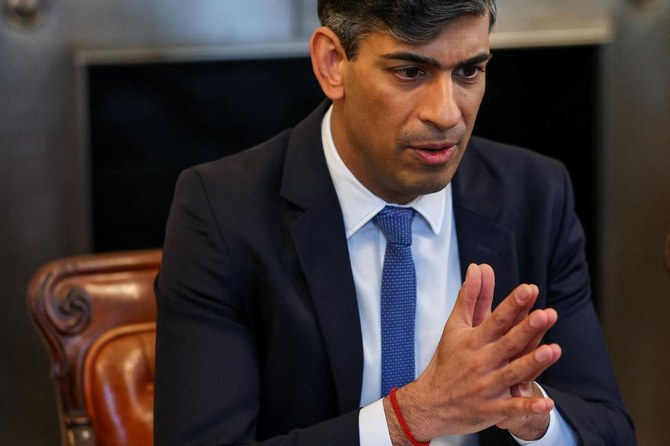
- UN called on the UK to instead take practical measures to address irregular flows of migrants and refugees
GENEVA: Two United Nations top officials on Tuesday called on the UK to reconsider its plan to transfer asylum seekers to Rwanda, warning the move would have a harmful impact on human rights and refugee protection.
In a joint statement, Filippo Grandi, the UN High Commissioner for Refugees, and Volker Turk, the UN High Commissioner for Human Rights, called on the UK to instead take practical measures to address irregular flows of migrants and refugees.
“The new legislation marks a further step away from the UK’s long tradition of providing refuge to those in need, in breach of the Refugee Convention,” said Grandi.
Turk, who has criticized the plan before, said that the legislation “seriously hinders the rule of law in the UK and sets a perilous precedent globally.”
British Prime Minister Rishi Sunak promised on Monday to start sending asylum seekers to Rwanda within 10 to 12 weeks as the upper house of parliament passed legislation that had been delayed for weeks by attempts to alter the plan.
Other countries are considering tough measures to stem illegal migration, with Italy planning to build reception camps in Albania for thousands of migrants arriving by sea.
Asia hit hardest by climate, weather disasters in 2023:UN
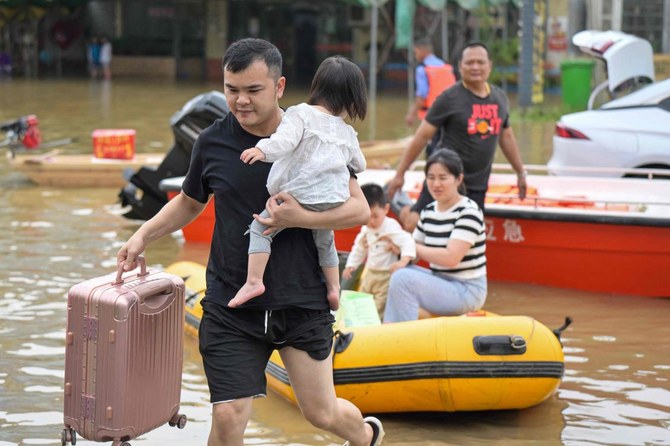
- UN’s weather and climate agency said Asia was warming at a particularly rapid pace
GENEVA: Asia was the world’s most disaster-hit region from climate and weather hazards in 2023, the United Nations said Tuesday, with floods and storms the chief cause of casualties and economic losses.
Global temperatures hit record highs last year, and the UN’s weather and climate agency said Asia was warming at a particularly rapid pace.
The World Meteorological Organization said the impact of heatwaves in Asia was becoming more severe, with melting glaciers threatening the region’s future water security.
The WMO said Asia was warming faster than the global average, with temperatures last year nearly two degrees Celsius above the 1961 to 1990 average.
“The report’s conclusions are sobering,” WMO chief Celeste Saulo said in a statement.
“Many countries in the region experienced their hottest year on record in 2023, along with a barrage of extreme conditions, from droughts and heatwaves to floods and storms.
“Climate change exacerbated the frequency and severity of such events, profoundly impacting societies, economies, and, most importantly, human lives and the environment that we live in.”
The State of the Climate in Asia 2023 report highlighted the accelerating rate of key climate change indicators such as surface temperature, glacier retreat and sea level rise, saying they would have serious repercussions for societies, economies and ecosystems in the region.
“Asia remained the world’s most disaster-hit region from weather, climate and water-related hazards in 2023,” the WMO said.
Ranging disasters
The annual mean near-surface temperature over Asia in 2023 was the second highest on record, at 0.91 degrees Celsius above the 1991-2020 average, and 1.87 C above the 1961-1990 average.
Particularly high average temperatures were recorded from western Siberia to central Asia, and from eastern China to Japan, the report said, with Japan having its hottest summer on record.
As for precipitation, it was below normal in the Himalayas and in the Hindu Kush mountain range in Pakistan and Afghanistan.
Meanwhile southwest China suffered from a drought, with below-normal precipitation levels in nearly every month of the year.
The High-Mountain Asia region, centered on the Tibetan Plateau, contains the largest volume of ice outside of the polar regions.
Over the last several decades, most of these glaciers have been retreating, and at an accelerating rate, the WMO said, with 20 out of 22 monitored glaciers in the region showing continued mass loss last year.
The report said 2023 sea-surface temperatures in the northwest Pacific Ocean were the highest on record.
Water-related hazards
Last year, 79 disasters associated with water-related weather hazards were reported in Asia. Of those, more than 80 percent were floods and storms, with more than 2,000 deaths and nine million people directly affected.
“Floods were the leading cause of death in reported events in 2023 by a substantial margin,” the WMO said, noting the continuing high level of vulnerability of Asia to natural hazard events.
Hong Kong recorded 158.1 millimeters of rainfall in one hour on September 7 — the highest since records began in 1884, as a result of a typhoon.
The WMO said there was an urgent need for national weather services across the region to improve tailored information to officials working on reducing disaster risks.
“It is imperative that our actions and strategies mirror the urgency of these times,” said Saulo.
“Reducing greenhouse gas emissions and adapting to the evolving climate is not merely an option, but a fundamental necessity.”



